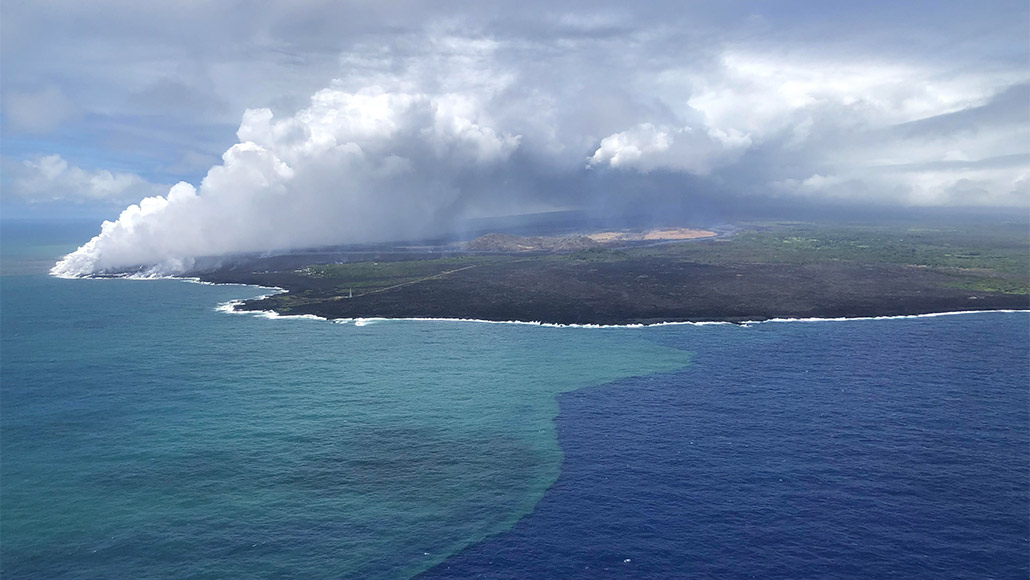
As lava from Kilauea poured into the ocean in June of 2018, a vast field of algae bloomed off the coast of Hawaii’s Big Island.
U.S. Coast Guard

As lava from Kilauea poured into the ocean in June of 2018, a vast field of algae bloomed off the coast of Hawaii’s Big Island.
U.S. Coast Guard